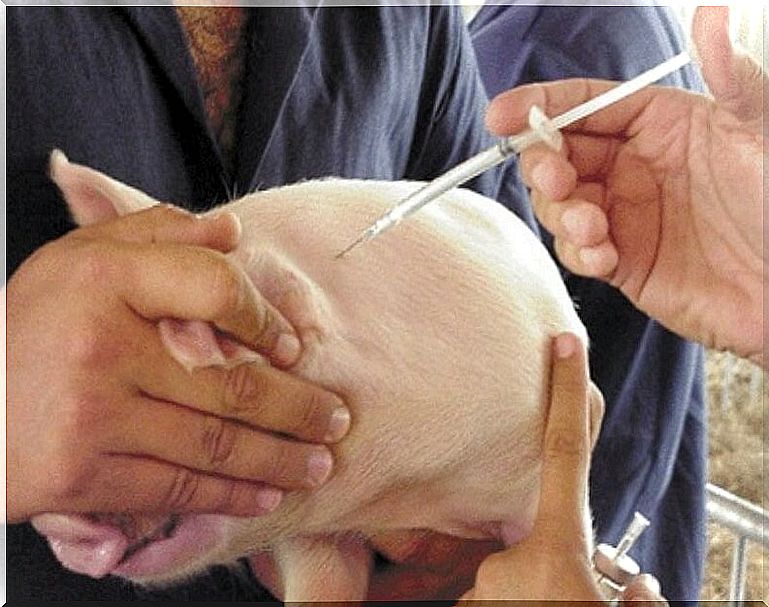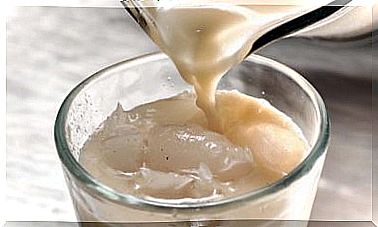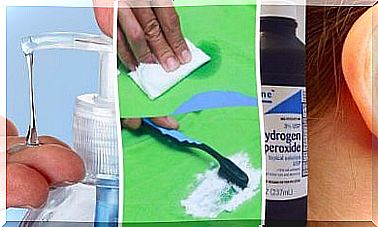Treatment Of Swine Fever
Swine fever is developed by the infection of the RNA virus, which is formed by the bovine viral diarrhea virus (BVD) and the border disease virus (EF), which are part of the Pestivirus category, of the family Flaviviridae . This virus attacks through various routes, either through ingestion, inhalation, through the skin or through semen.
At the time of infection, the virus multiplies in the tonsils, causing an oral or nasal infection, or it lodges in the regional lymph nodes. Later, it passes into the bloodstream and causes an infection in the tissues. This occurs in a period that begins at 12 hours and can continue for several weeks.
Eventually, the plague reaches the target organs and forms new aftershocks and lesions that cause bleeding. In this sense, those most frequently affected are the following:
- Spleen.
- Ganglia
- Kidneys.
- Lungs.
- Bone marrow.
Swine fever control

According to what the National Center for Food Safety of Cuba reports, for an effective control of swine fever a series of sanitary measures must be applied. For example, some of them are the elimination of all the pigs in the affected farms, the disinfection of the same, the prohibition of the movement of animals, the epizootiological surveillance and the restocking regulations.
Fortunately, there are a wide variety of methods to control and treat swine fever. However, each country has its own sanitary, prophylactic and medical rules depending on the context in which it is located. What is important is to establish a strategy that takes into account the following factors:
- Vaccination and prevention measures.
- How long the pestile infection lasts.
- Analysis of the size, structure and types of offspring.
- The degree of development in which the Animal Health Services are found.
- The possibility of taking advantage of state funds or private institutions to combat the plague.
- The economic value of affected pigs at the national level in relation to exports.
Swine fever treatment

In reality, there is no specific treatment to combat swine fever once the pig is infected. Therefore, the goal of swine fever treatment is to decrease the spread of the virus to other animals.
The recommended thing is a vaccination program for a period of 2 to 3 years, combined with sanitary control measures. This is advised in order to eliminate carrier animals and repopulate with vaccinated animals that are not fed with waste.
In an article of his authorship, the veterinary doctor Pérez Rodríguez affirms that “l he vaccines that have been used in the last two decades without problems are four modified live vaccines: the lapinized “C” strain, the Japanese strain adapted to guinea pig cell culture, the French Thiverval strain adapted to the PK-15 cell line and PAV -250 at PK-15 ″.
Likewise, in that publication it also indicates that “these four vaccines do not present residual virulence and are considered safe, both for pregnant sows and for piglets over two weeks old. These vaccines confer a fast and lasting immunity ”.
Prevention measures

In order to avoid contagion in humans, it is recommended to take into account some prevention measures:
- Avoid direct contact with wild boars.
- Do not buy pigs in street markets.
- Do not feed the pigs kitchen waste.
- Change clothes and shoes after visiting the farm.
- Wash clothes and shoes in hot water and detergent after visiting the farm.
- Perform a disinfectant bath at least 3 times a week.
- Do not use instruments that have been used on other farms.
In short, as we have pointed out, prevention is a fundamental task in terms of swine fever treatment, since it is not possible to cure it once the infection occurs. The health areas of different countries tend to have very strict regulations to prevent further spread of this condition.









